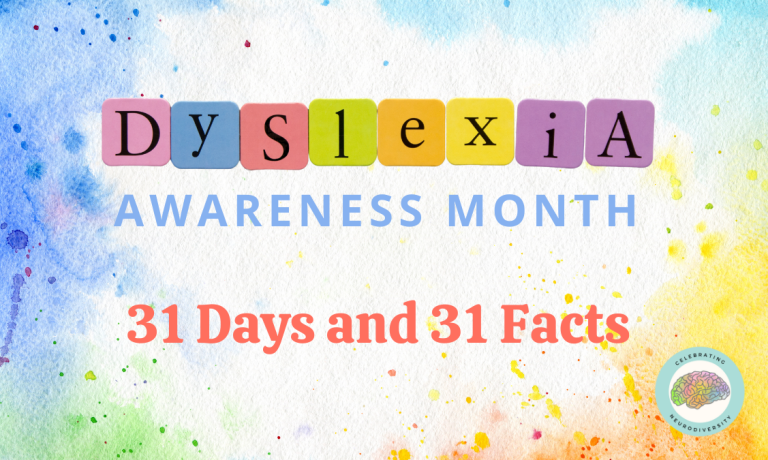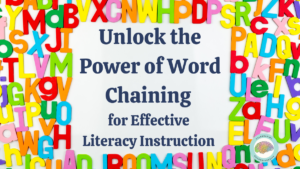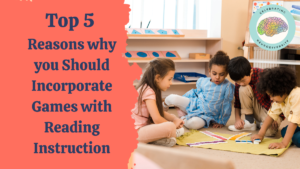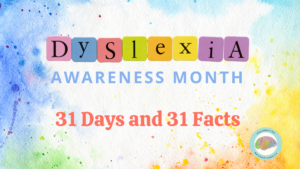In honor of dyslexia awareness month, I am sharing 31 facts about dyslexia in my quest to educate and support awareness of dyslexia.

Fact 1
It is estimated that up to 20 percent of the population has some degree of dyslexia. This means in a classroom of 25 students, about 5 will have dyslexia. Of the millions of American adults with dyslexia, only about 5% know they have dyslexia.

Fact 2
Dyslexia is hereditary. If a parent has dyslexia, their children have a 50% chance of having dyslexia. If both parents are dyslexic, their children have 100% chance of being dyslexic.

Facts 3
Dyslexia is a specific learning disability that is neurological in origin. According to the International Dyslexia Association, “Dyslexia is a specific learning disability that is neurobiological in origin. It is characterized by difficulties with accurate and/or fluent word recognition and by poor spelling and decoding abilities. These difficulties typically result from a deficit in the phonological component of language.”

Fact 4
Dyslexia is not a vision issue but rather difficulty understanding how sounds in words are represented by letters.

Fact 5
Letter reversals are not due to ‘seeing’ words backward. It’s mainly caused by problems with directionality and the ability to decipher left and right. Our brains know how to recognize objects. For example, a puppy is a puppy from any direction. This is called mirror invariance. We have to unlearn this skill for letters because a stick and a ball one way is not the same as a ball and a stick the other way. This means letters have to be stored in our memory differently.

Fact 6
Dyslexia is a weakness within the phonologic module of the brain. This is where sounds of language are put together to form words and where we break words back down into sounds. This causes difficulties in learning to read.
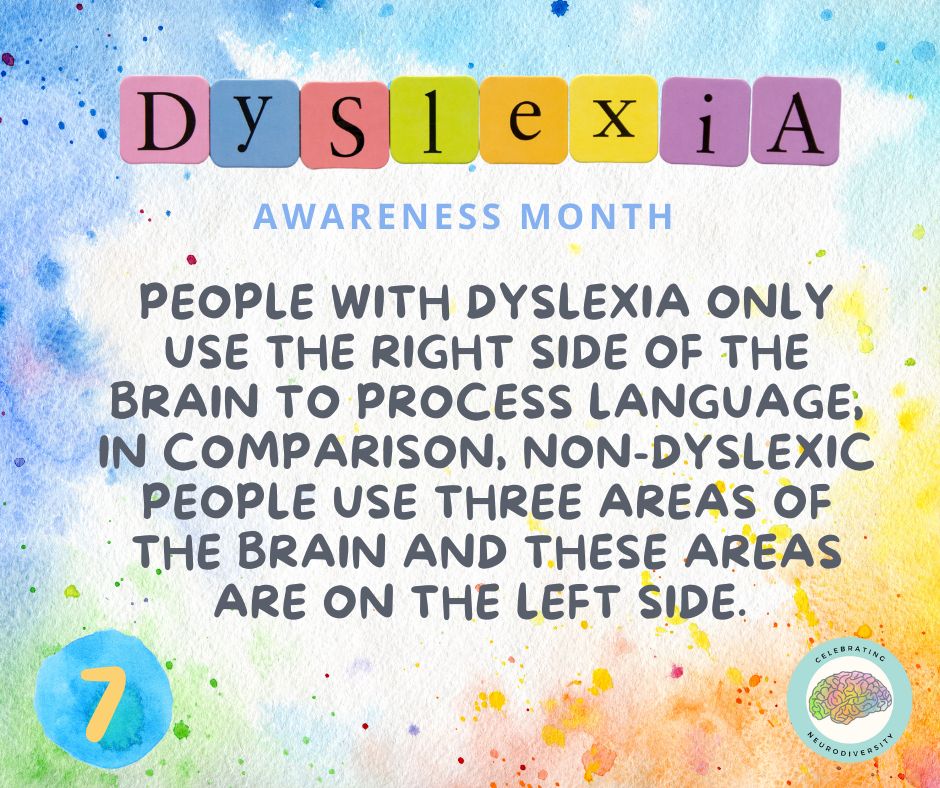
Fact 7
People with dyslexia only use the right side of the brain to process language and read, in comparison, non-dyslexic people use three areas of the brain and these areas are on the left side. Yale researchers found that dyslexics front part of the brain is overstimulated while reading and portions in the center and back of the brain are under-stimulated.
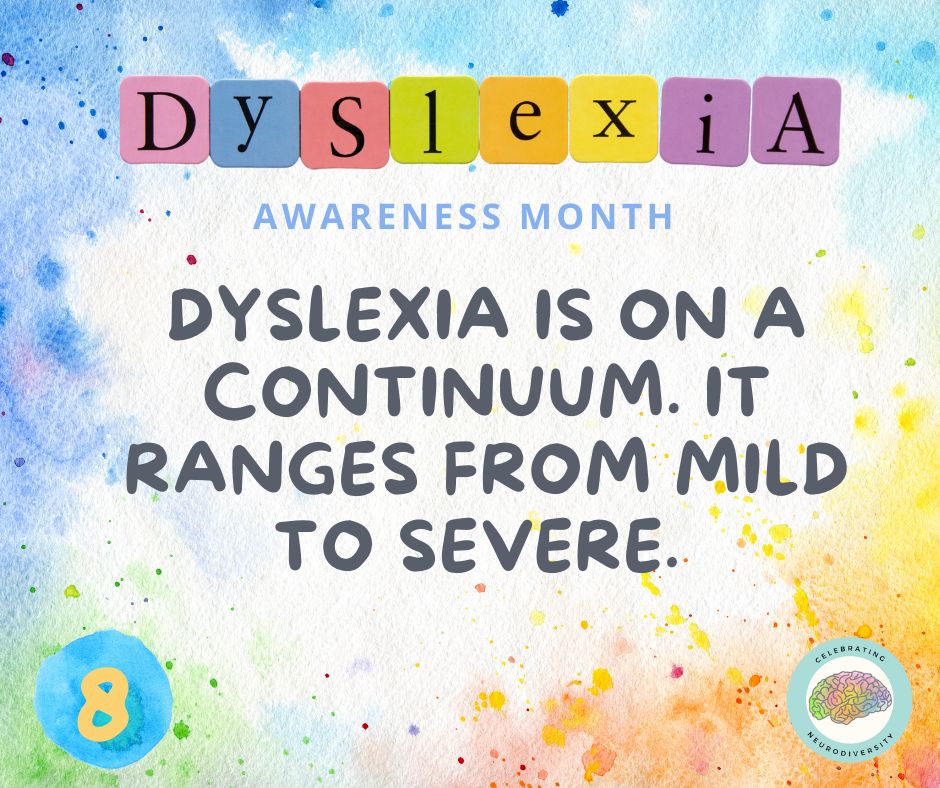
Fact 8
Dyslexia is on a continuum. It ranges from mild to severe.
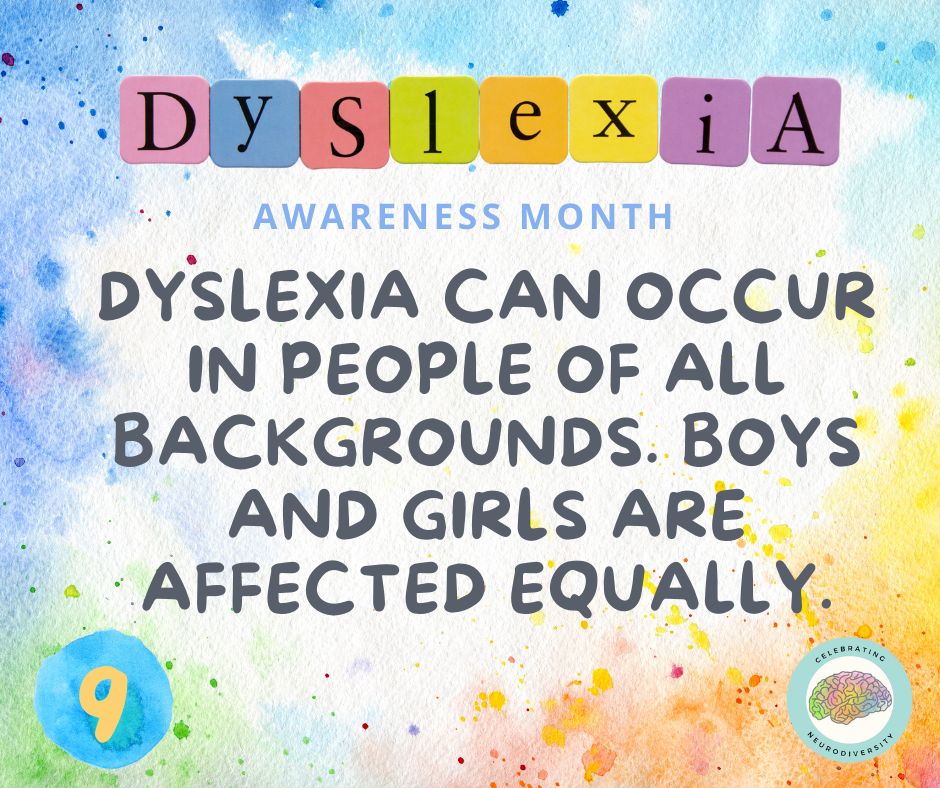
Fact 9
Dyslexia can occur in people of all ethnic and socioeconomic backgrounds. Boys and girls are also affected equally.
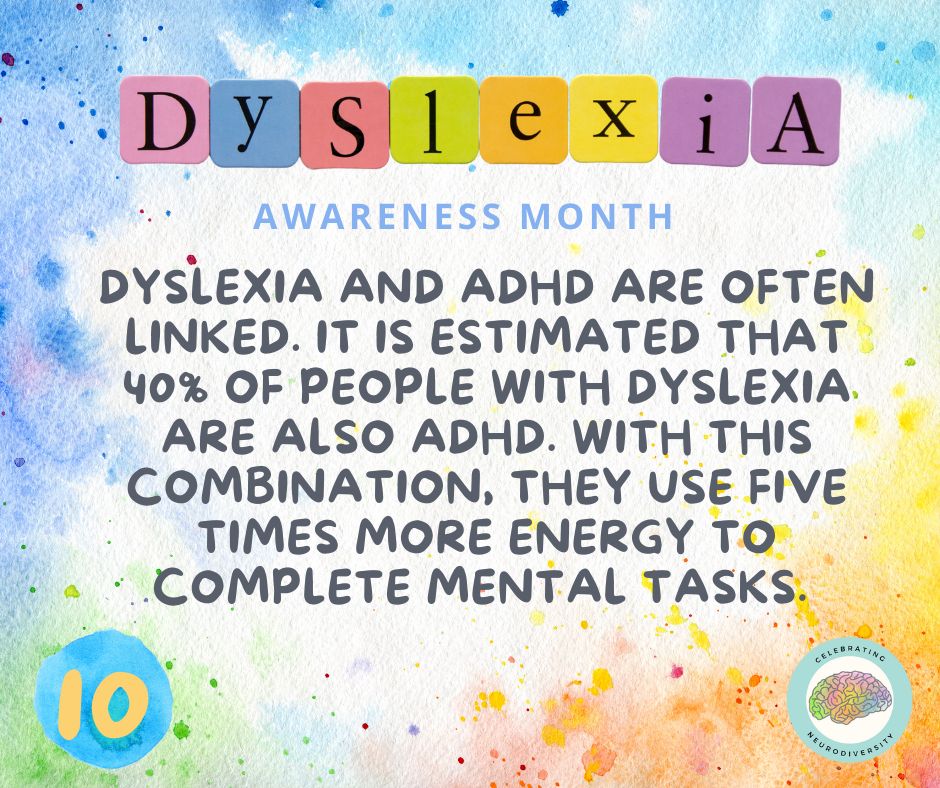
Fact 10
Dyslexia and ADHD are often linked. It is estimated that 40% of people with dyslexia also have ADHD. With this combination, they use five times more energy to complete mental tasks. People with dyslexia are not lazy. They are trying much harder than it may seem.
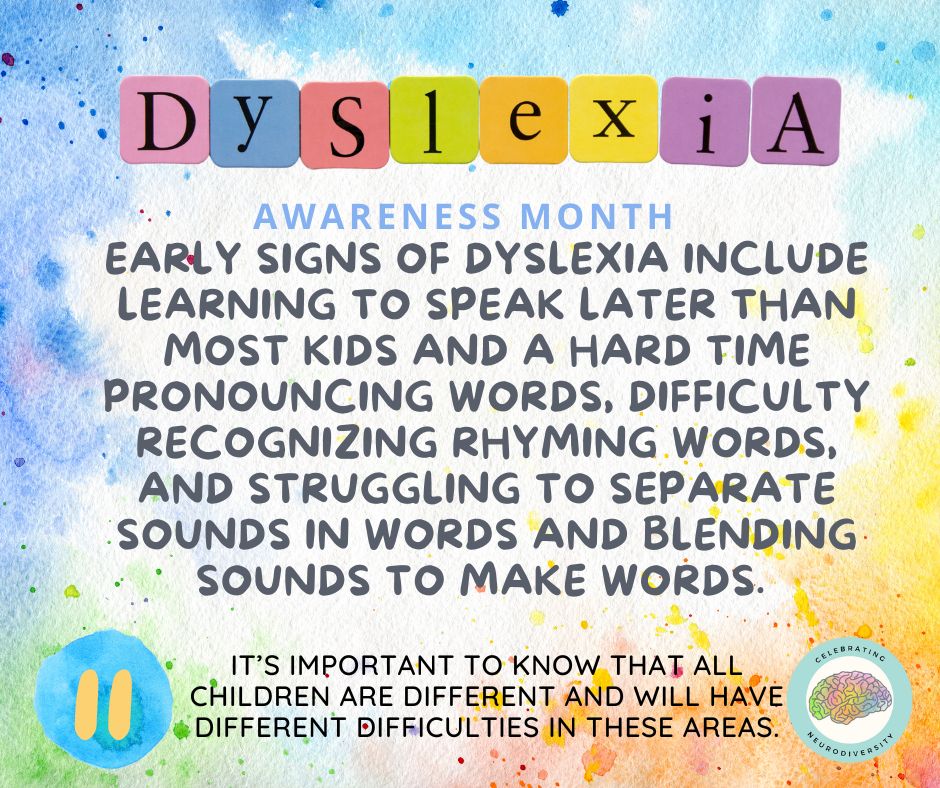
Fact 11
Early signs of dyslexia include learning to speak later than most kids and having a hard time pronouncing words, having difficulty recognizing rhyming words, and struggling to separate sounds in words and blending sounds to make words.
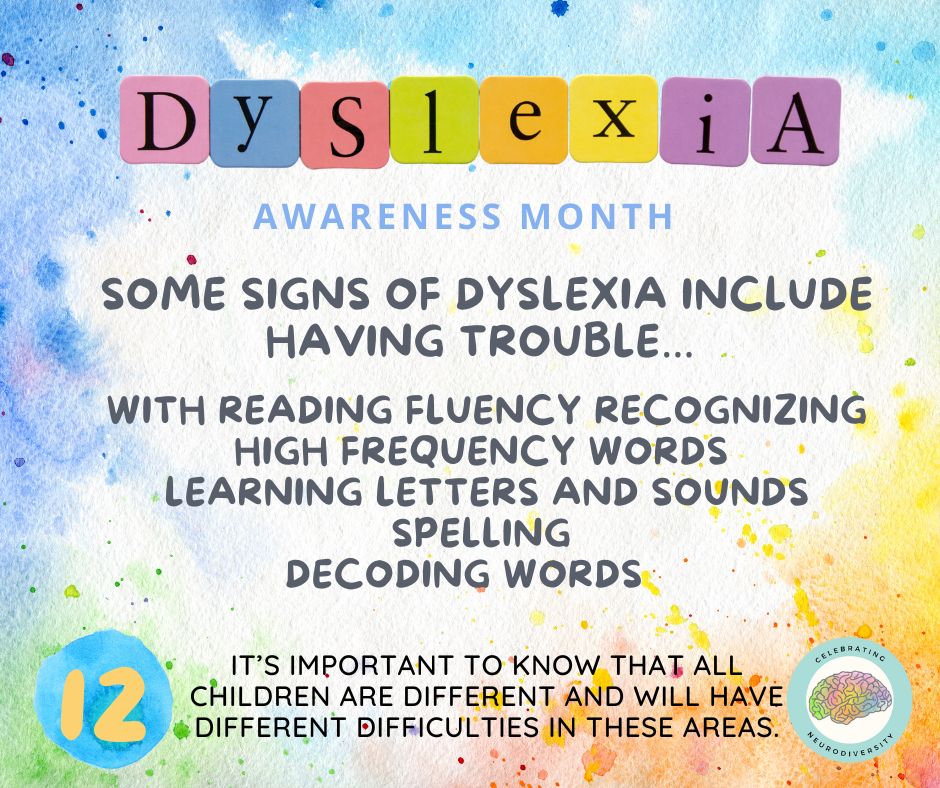
Fact 12
Later signs of dyslexia include having trouble with reading fluency, recognizing high-frequency words, learning letters and sounds, spelling, decoding, and comprehending what they read.
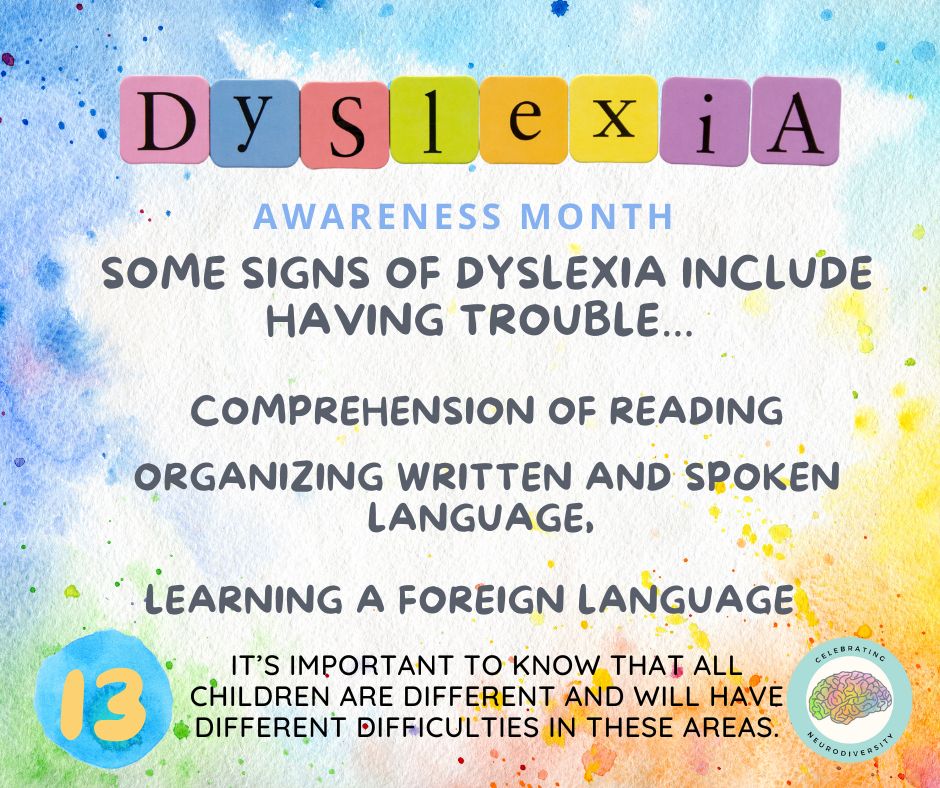
Fact 13
Additional signs of dyslexia include having trouble organizing written and spoken language and learning a foreign language.

Fact 14
Signs of dyslexia can also be evident in math. Students may have a hard time memorizing math facts, like multiplication facts, and correctly doing math operations.
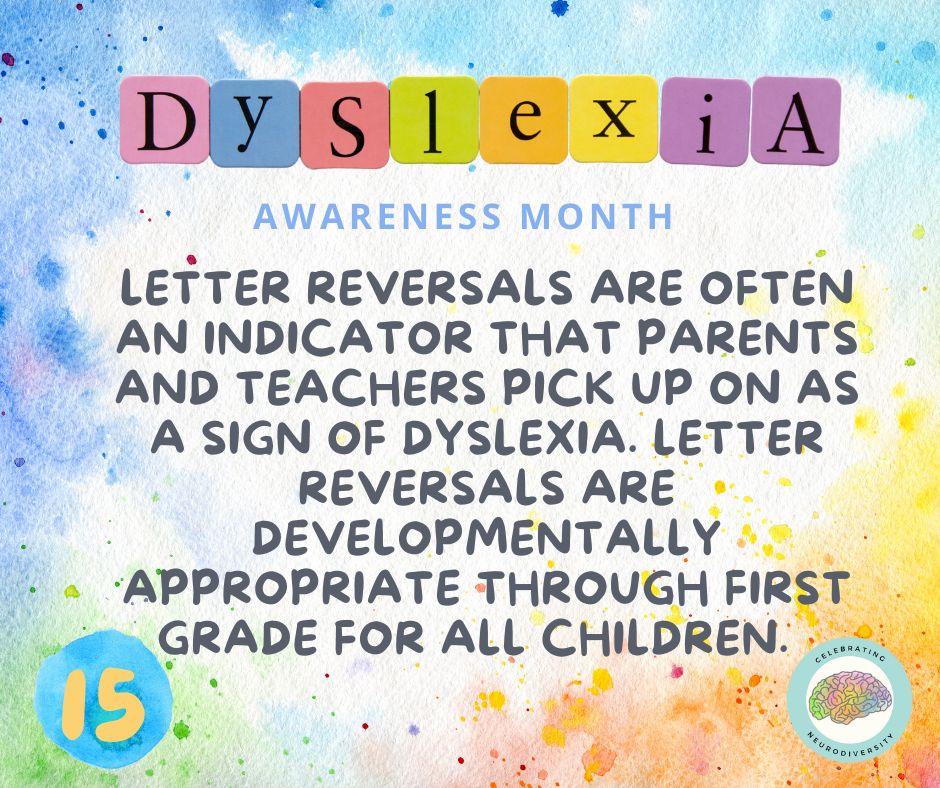
Fact 15
Writing some letters or words backward is often an indicator that parents and teachers pick up on as a sign of dyslexia. Letter reversals are developmentally appropriate through first grade for all children as they continue to learn and develop skills to store similarly shaped letters to memory. After this developmentally appropriate time, letter reversals are mainly caused by problems with directionality and the ability to decipher left and right.
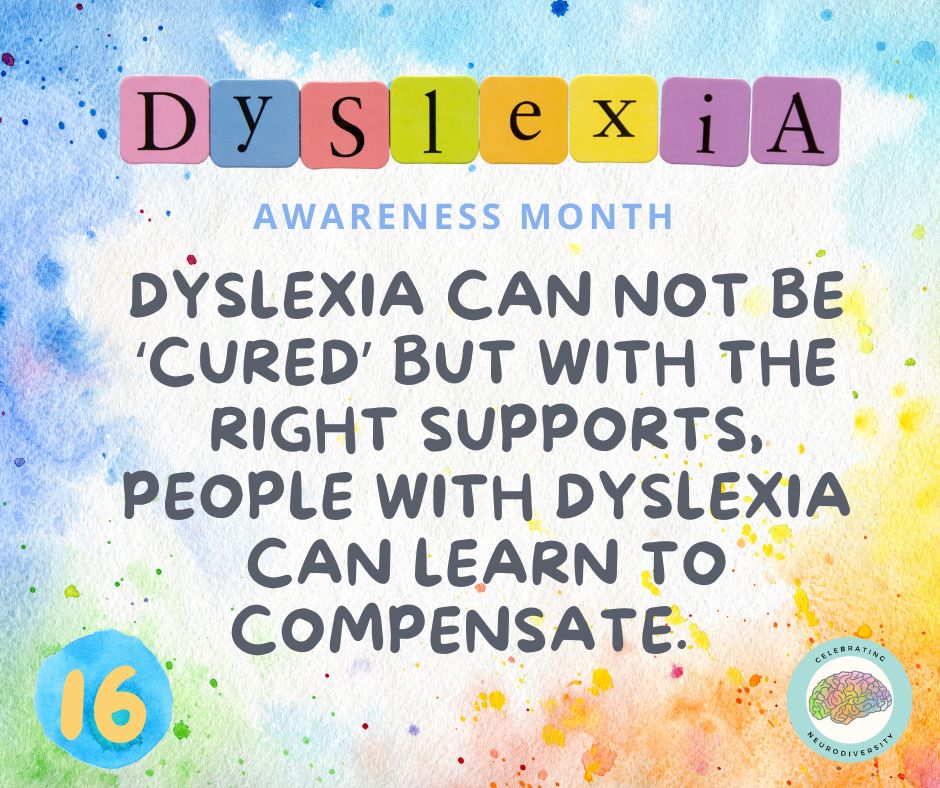
Fact 16
Dyslexia cannot be ‘cured’ but with the right supports, people with dyslexia can learn to compensate.
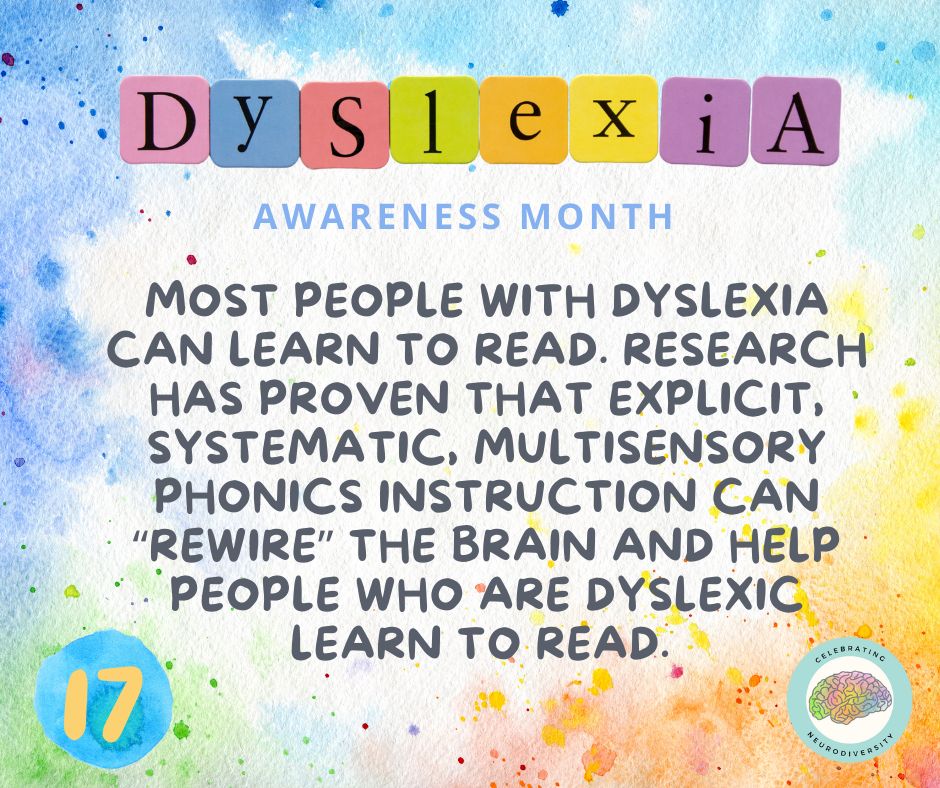
Fact 17
Most people with dyslexia can learn to read. Research has proven that explicit, systematic, multisensory phonics instruction can “rewire” the brain and help people who are dyslexic learn to read.
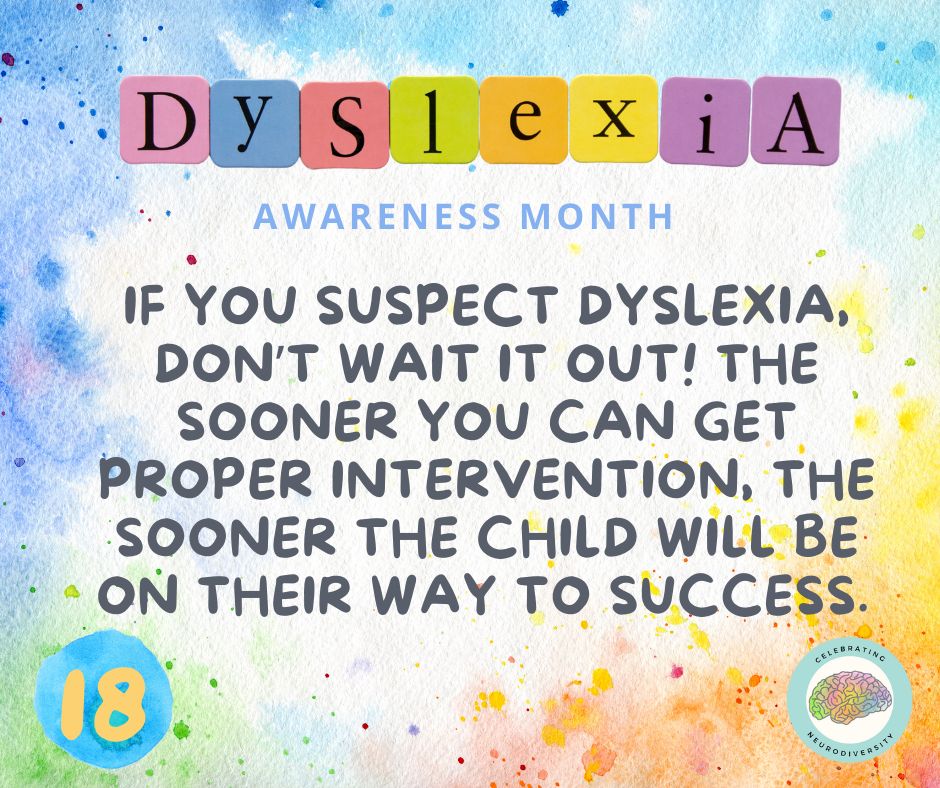
Fact 18
If you suspect dyslexia, don’t wait it out. The sooner you can get proper intervention, the sooner the child will be on their way to reading success. Trust your instincts. School teachers may not have the proper knowledge of dyslexia. Seek out help as soon as possible.
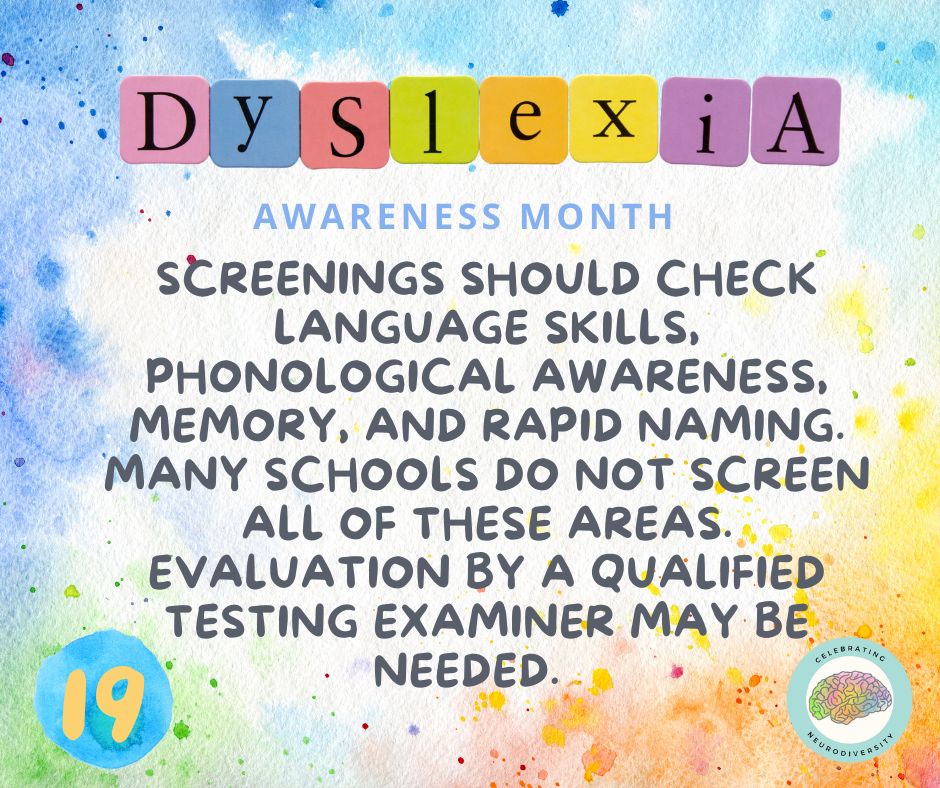
Fact 19
Screenings can be done for dyslexia and should check language skills, phonological awareness, memory, and rapid naming. Many schools do not screen all of these areas. Evaluation by a qualified testing examiner may be needed.
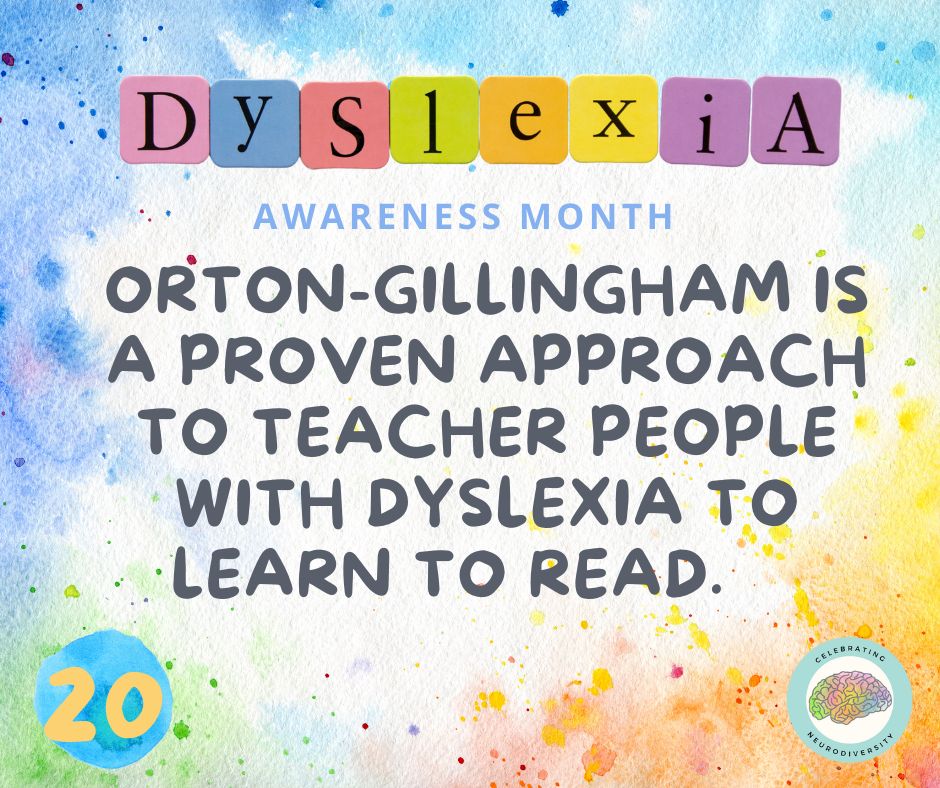
Fact 20
Orton Gillingham is a proven approach to teacher people with dyslexia to learn to read. Connect with your child’s school about specialized instruction for dyslexia or seek out a tutor that specializes in dyslexia and will use Orton-Gillingham methodology.
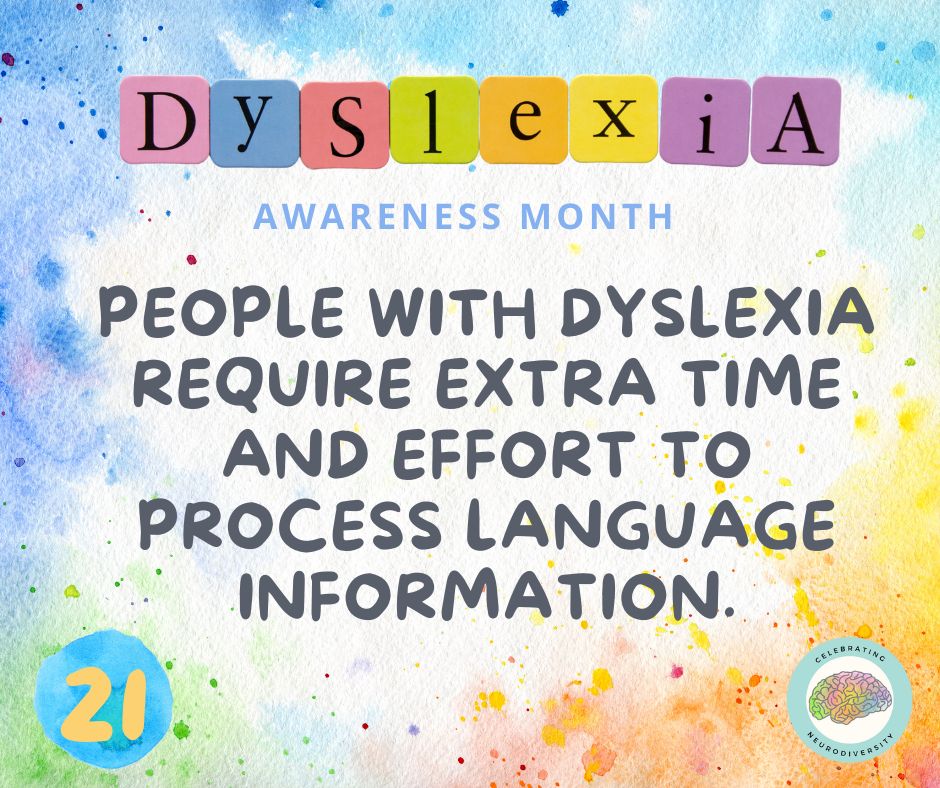
Fact 21
People with dyslexia require extra time and effort to process language information. Having extended time on assignments and tests, allowing breaks, and shortening tasks are all beneficial.

Fact 22
Modifications and accommodations can be vital for the success of a student with dyslexia. Letting students show their knowledge in alternate ways like verbally answering questions, using talk to text features, or recording their answers.
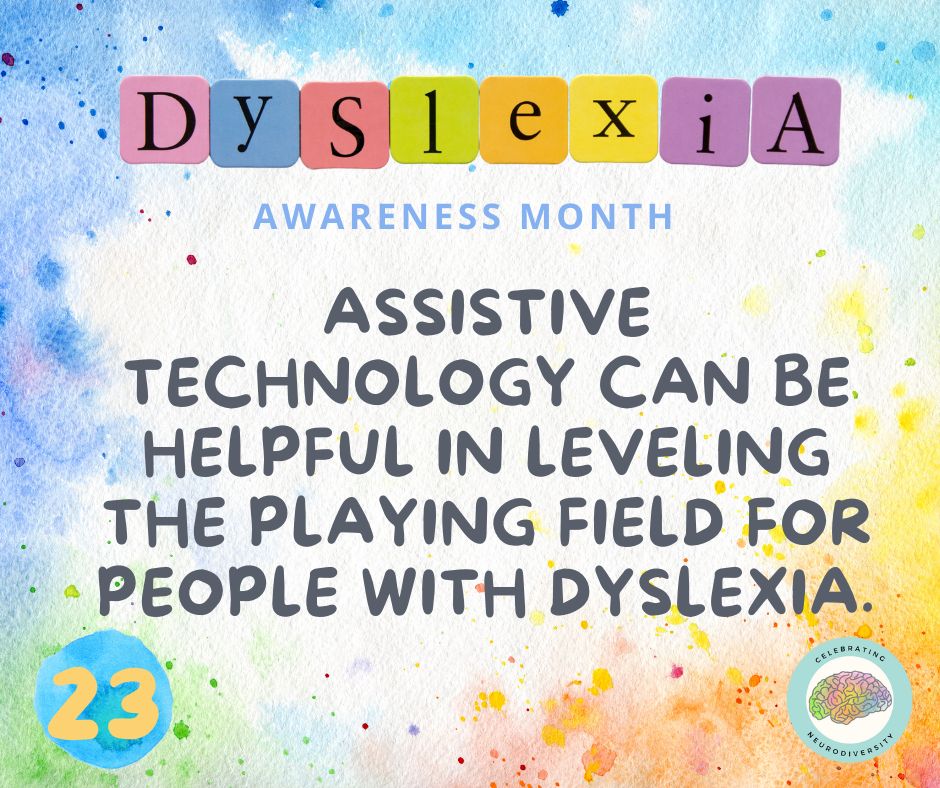
Fact 23
Assistive technology can level the playing field for people with dyslexia. Assistive technology includes text to speech software, speech to text software, spell checkers, and grammar checkers so that knowledge is assessed and not spelling, grammar, or writing abilities.
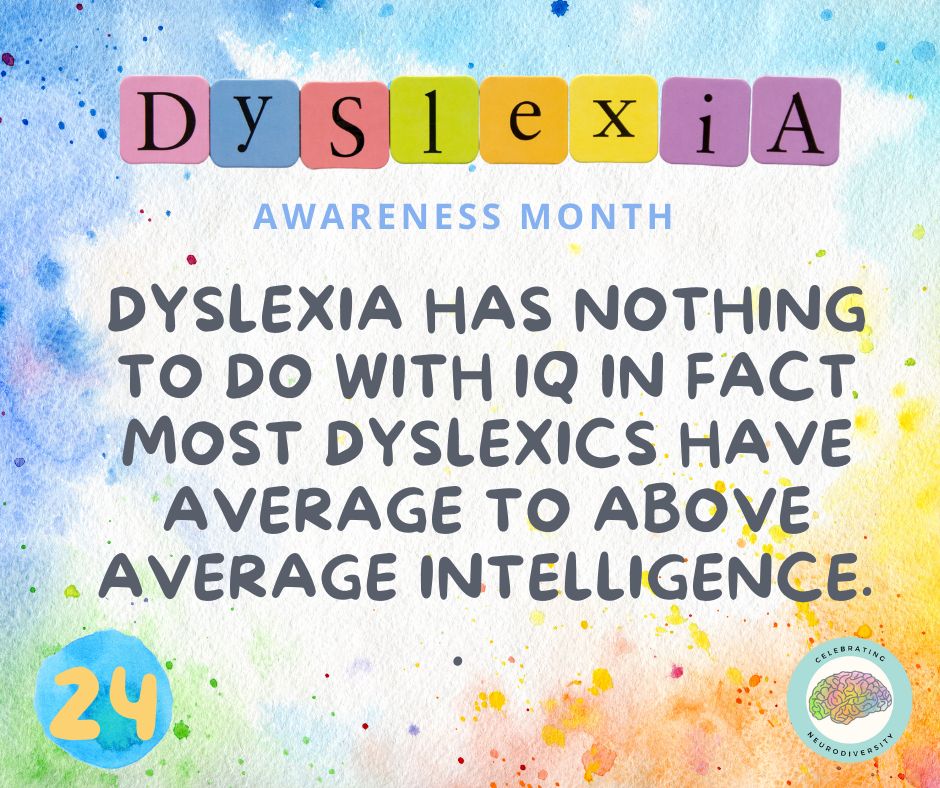
Fact 24
Dyslexia has nothing to do with IQ. In fact, most dyslexics have average to above average intelligence.
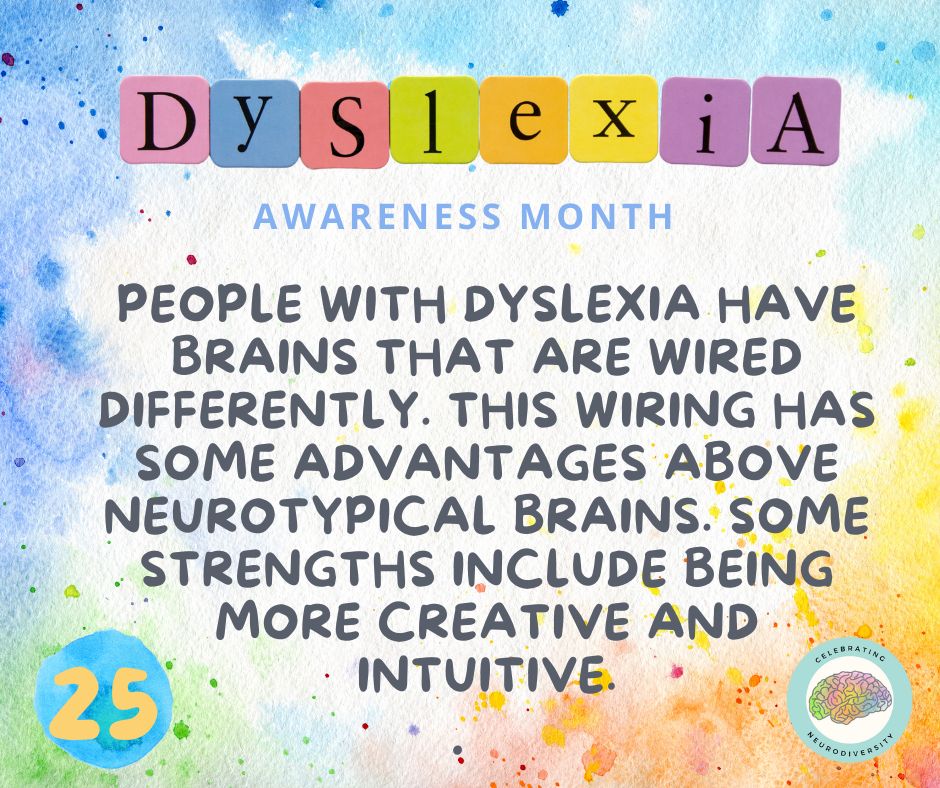
Fact 25
The brains of people with dyslexia are wired differently. This makes it harder to learn to read but brain differences come with advantages as well. Some strengths include being extra curious, creative and intuitive. Dyslexic strengths are often superior to those with neurotypical brains.

Fact 26
The list of strengths of people with dyslexia is not all-inclusive and each person with dyslexia has different strengths. Additional advantages of dyslexia include a strong ability to see the big picture, critical thinking, strong reasoning skills, and thinking outside the box. We can use these strengths to the student’s advantage in learning and being successful in life.
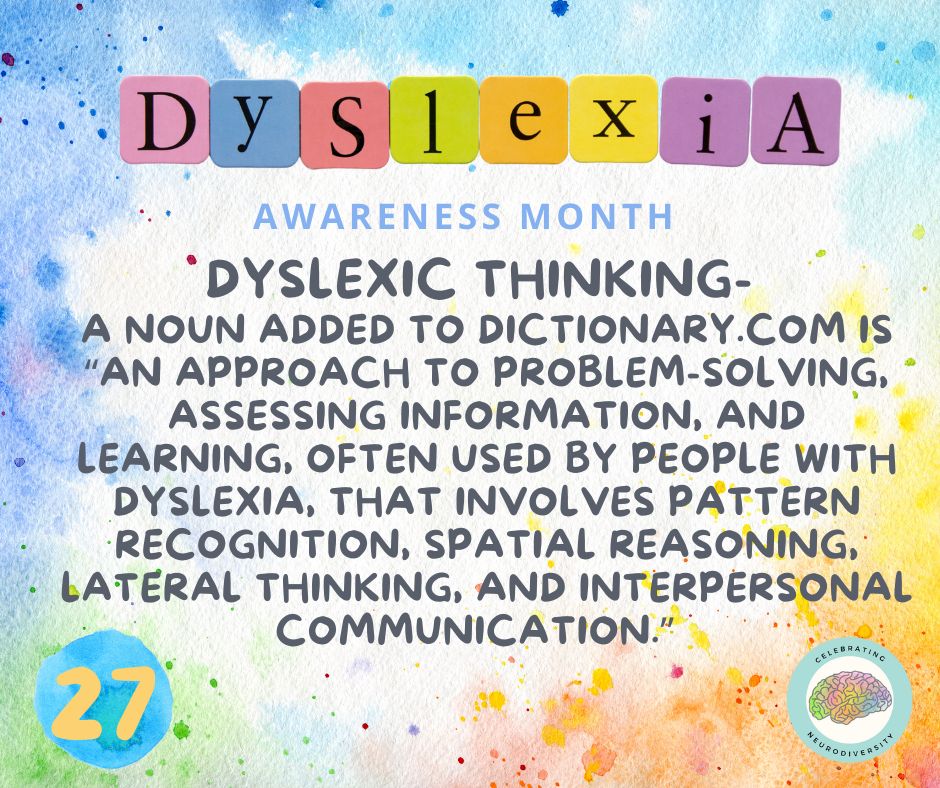
Fact 27
Dyslexic thinking, is a noun recently added to dictionary.com. It is defined as “an approach to problem-solving, assessing information, and learning, often used by people with dyslexia, that involves pattern recognition, spatial reasoning, lateral thinking, and interpersonal communication.”
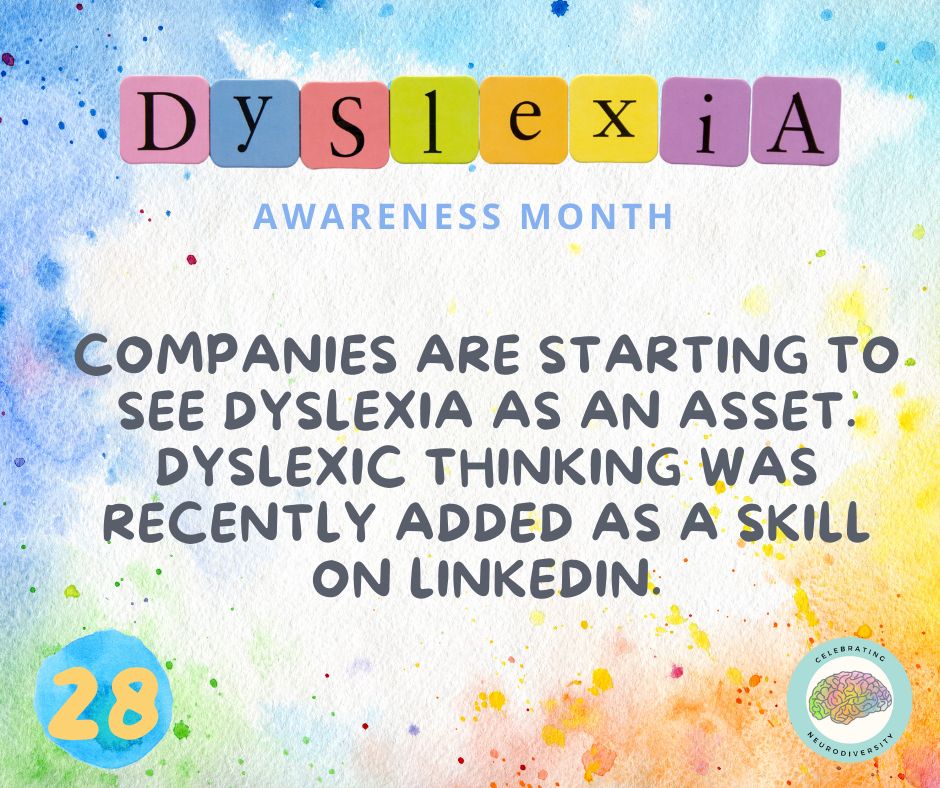
Fact 28
Companies are starting to see dyslexia as an asset. Dyslexic thinking was recently added as a skill on LinkedIn.
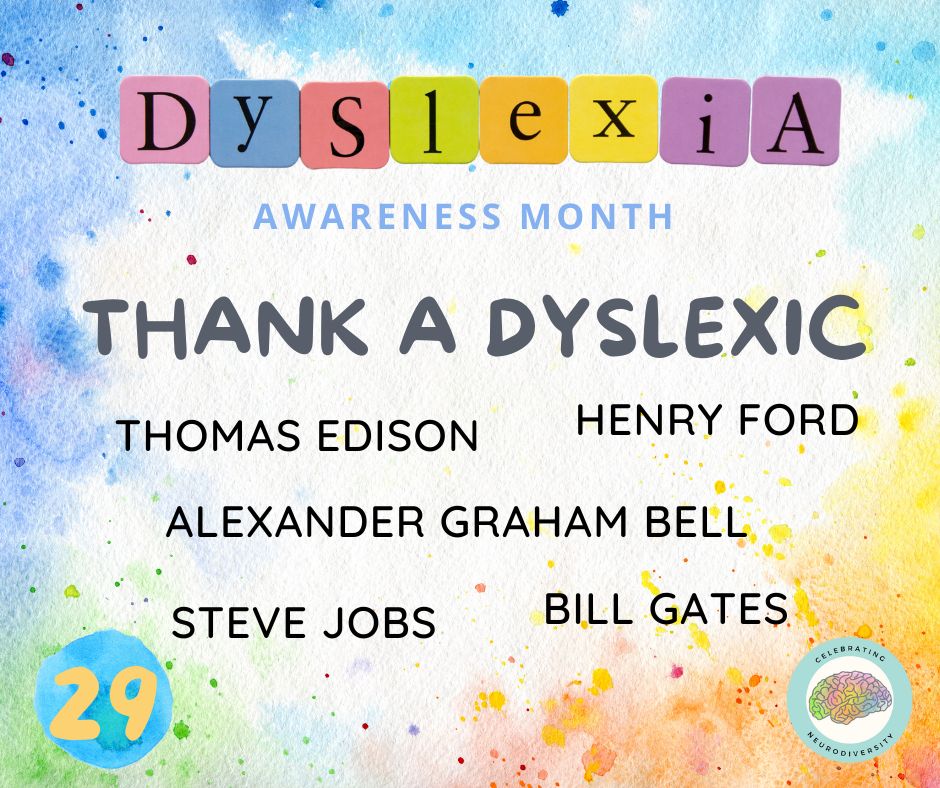
Fact 29
Thank a dyslexic. There are many famous people with dyslexia who have used their strengths to make this world a better place.
- Thomas Edison- created many inventions to improve the human experience
- Alexander Graham Bell- is best known for the invention of the telephone
- Henry Ford- created the ford motor company and the first Ford model T car
- The Wrights brothers- Orville and Wilbur created the first plane.
- Steve Jobs- created devices such as the iPad, iPod, and iPhone
- Bill Gates- founded the Microsoft Corporation
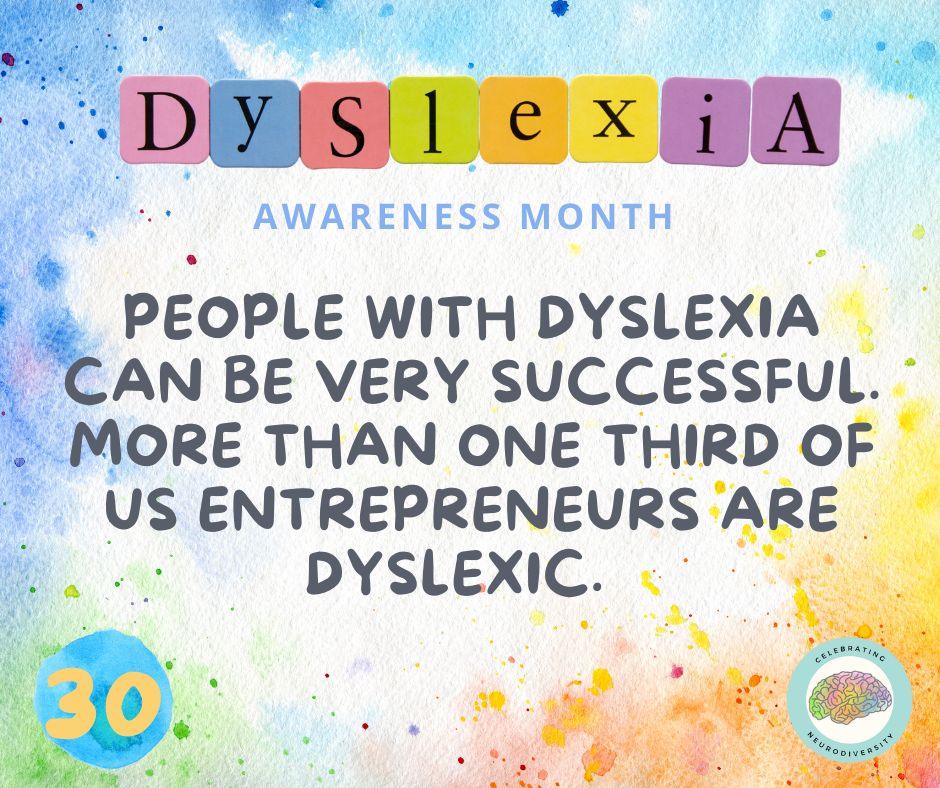
Fact 30
People with dyslexia can be very successful. More than one-third of US entrepreneurs are dyslexic.

Fact 31
People with dyslexia and their families are not alone. Here are some resources to learn more about dyslexia:
International Dyslexia Association
The Yale Center of Dyslexia and Creativity
Additional blog posts
How to Identify Signs of Dyslexia in Children so You Can Help Them Succeed

